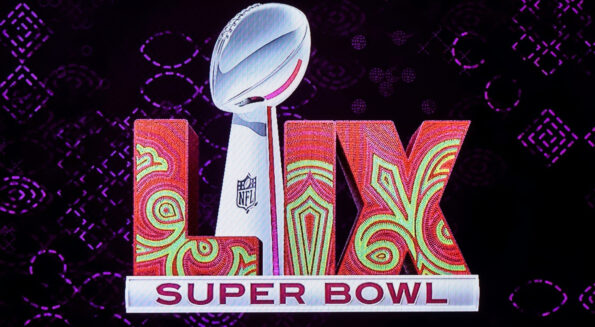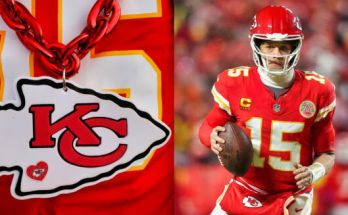The Super Bowl 59 logo is a historic and visually striking design that stands out from previous years. Unlike past Super Bowl logos that followed a standardized template with minimal local influence, the NFL and a local New Orleans artist collaborated to create this year’s logo.
Here is everything you need to know about its logo, including its creator, changes throughout the years, and the conspiracy theory revolving around it.
Designer Tahj Williams: The First Black Woman To Make A Super Bowl Logo
The Super Bowl 59 logo was designed by Tahj Williams, a 26-year-old artist from New Orleans who also works as a Microsoft cybersecurity analyst. Williams, known as “Queen Tahj,” is an active member of the Black Masking Indian tribe, a tradition in New Orleans that dates back centuries. This tradition, also called Mardi Gras Indians, honors the Native Americans who provided refuge to enslaved Africans and has evolved into a vibrant part of the city’s culture.

Williams made history as the first Black woman to create both the Super Bowl logo and its theme art. Her design process involved the intricate beadwork traditionally used by Mardi Gras Indians. The NFL released a video showcasing her method, where she carefully arranged thousands of beads to form the foundation of the logo before it was digitized for official use. She described her inspiration as a fusion of her two passions: football and Black Masking. Interestingly, Williams played football in her youth and even captained her middle school team, defying gender norms in the sport.
Evolution Of The Super Bowl Logo And Recent Changes
The first Super Bowl in 1967 did not feature an official logo, but from Super Bowl 2 onwards, each championship game has had a unique emblem. From 1968 to 2010, Super Bowl logos often incorporated elements from the host city, such as Super Bowl 31’s Mardi Gras references for New Orleans or Super Bowl 27’s rose design for Pasadena.
From 2011 to 2015, the NFL shifted to a standardized silver and black theme featuring the Lombardi Trophy with the host stadium in the background. This template changed in 2016 when Super Bowl 50 introduced gold accents to commemorate the milestone year. Since Super Bowl 56 in 2022, the league has incorporated local themes and bold colors into the Roman numerals of the logo. The Super Bowl 59 logo continues this trend with Mardi Gras-inspired colors, predominantly red and lime green, that is a nod to the vibrant culture of New Orleans.
Super Bowl Logo Conspiracy Theory: Fact Or Fiction?
Over the past few years, some fans have speculated that the colors of the Super Bowl logo predict the two teams competing in the championship game. The theory gained traction in Super Bowl 56 (2022) when the logo’s orange and yellow hues seemingly matched the colors of the Cincinnati Bengals and Los Angeles Rams. The pattern appeared to continue in Super Bowl 57 (2023), where the dark green and deep red shades resembled the Philadelphia Eagles and Kansas City Chiefs.

Over the past few years, some fans have speculated that the colors of the Super Bowl logo predict the two teams competing in the championship game. The theory gained traction in Super Bowl 56 (2022) when the logo’s orange and yellow hues seemingly matched the colors of the Cincinnati Bengals and Los Angeles Rams. The pattern appeared to continue in Super Bowl 57 (2023), where the dark green and deep red shades resembled the Philadelphia Eagles and Kansas City Chiefs.
However, the conspiracy theory faced a major challenge in Super Bowl 58 (2024). That year, the logo featured red and purple, which many assumed symbolized the San Francisco 49ers and Baltimore Ravens. Instead, the Kansas City Chiefs made it to the Super Bowl again, leading some fans to stretch the theory by linking the purple color to Taylor Swift’s album cover, as she had begun dating Chiefs tight end Travis Kelce.
Despite the ongoing debate, former NFL art director Michael Irwin debunked the theory, explaining that Super Bowl logos are designed at least two and a half years in advance, long before the final teams are known. While the colors often reflect the host city’s culture, there is no evidence that they predict the championship matchup.



